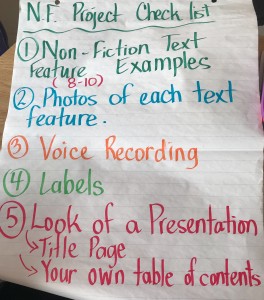The majority of what I read and write daily is non fiction. If I were to attach a statistic to it, I would hazard to say that 95% of what I read and write on a daily basis is non fiction. I like to write poetry and narratives too but I seldom have the time to do that and it is only for pleasure. I read fiction daily too. I read about 2 to 10 pages each night before falling asleep with my kindle on my chest. Many years ago I was introduced to the work of Tony Stead at a Reading for the Love of It conference. It changed my practice as a teacher forever. Tony made me realize that almost all of my classroom library was filled with fiction, all of my class read alouds were fiction and the majority of the writing that my students were doing was fiction in some form or another. I was not exposing them to enough non-fiction text and I was not preparing them for adult literacy. Using “Is that a Fact?” by Tony Stead and “Reading with Meaning” by Debbie Miller I began to create a literacy program for my primary classroom that had a much stronger focus on non fiction. I also began using my Scholastic book order money to augment my classroom library with nonfiction texts whenever possible.
I began explicitly teaching how to not only use, but to create non fiction text. This focus engaged those readers who had struggled most. There is far more information that can be read and synthesized through pictures in non fiction texts which enables all students, including the struggling readers, to contribute to discussions and make sense of text. Curiosity drove students to have a purpose for reading and authentic purpose is everything. We created “Wonderboxes”, an idea from Debbie Miller of small recipe boxes filled with index cards where students wrote down their questions and wonders. It wasn’t labeled inquiry teaching at that point, but in retrospect it is what we were doing. The students also created “Non Fiction Text Feature Notebooks” in which they designed illustrations that demonstrated the function of the various non fiction text features. More recently my grade 4 and 5 students used a screen casting app called Explain Everything in order to create short videos explaining non fiction text features. After learning what these text features were used for, students were able to interact with non fiction texts more efficiently to find what they needed. In addition, they began using these text features in their own writing, especially when uploading to blogs and creating Google Slide presentations.
I still value the world of fiction-especially for read alouds. I know the magic of getting lost in a book or a better yet a book series and I want my students to have that experience too. Being able to connect with another person over the topic of a book that has been thoroughly enjoyed is why book clubs and literature circles exist. However, I am also aware that it isn’t for everyone. A few years ago a colleague admitted to me that she had never enjoyed novel read alouds as a student because she just couldn’t visualize what was happening in the story in her own head. For whatever reason she was unable to provide the running movie that went along with the narration from the teacher. My first reaction was, “How sad!” but then I began to wonder just how many students I have taught over the years that felt exactly the same. My literacy program became a more balanced diet of fiction and non fiction. I encourage you to look through your own classroom library and review the read alouds that you have planned for the school year and take stock of how much of it is non fiction. You just may want to augment your classroom literary diet with something that includes diagrams, labels and a glossary.


